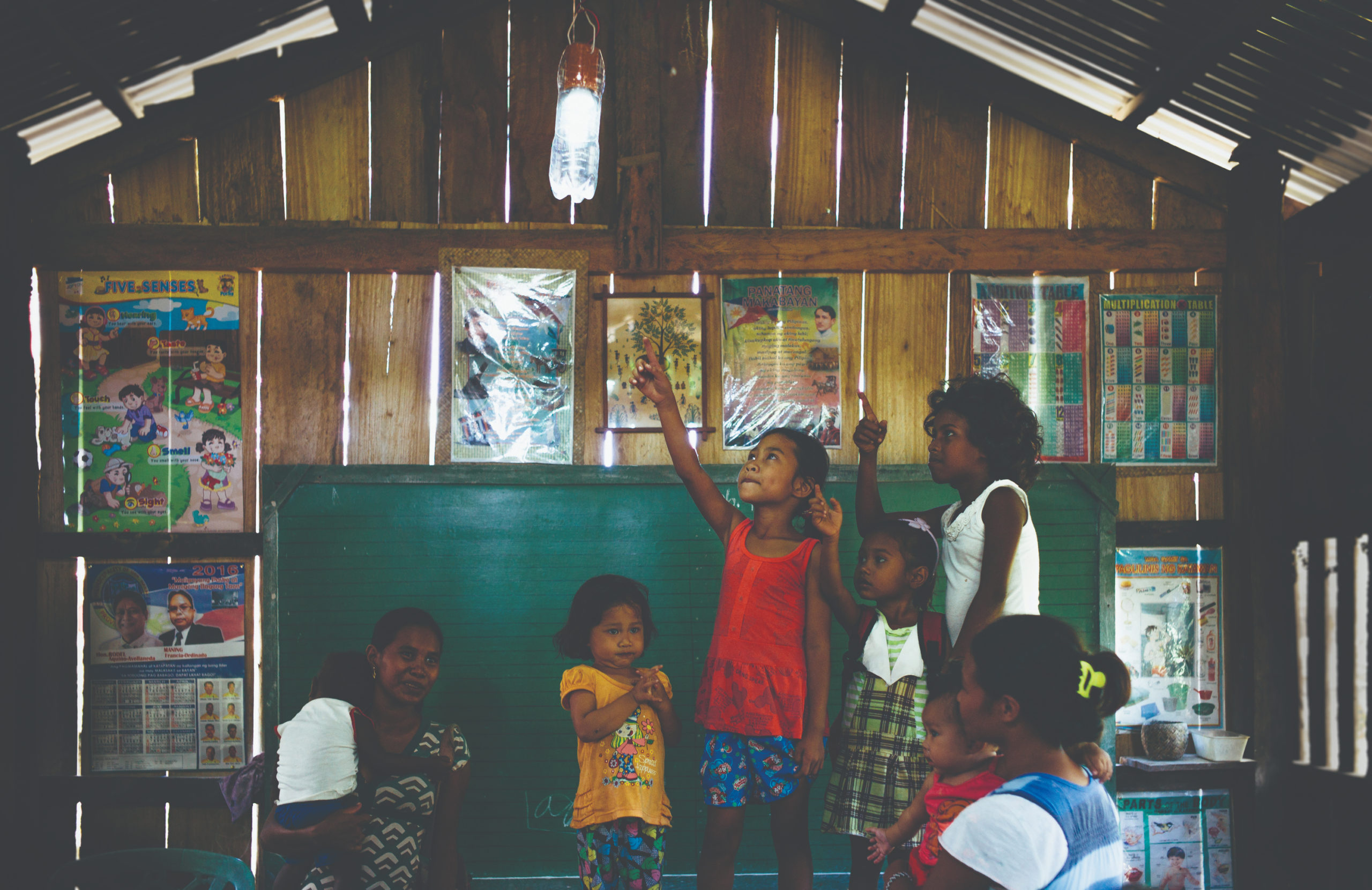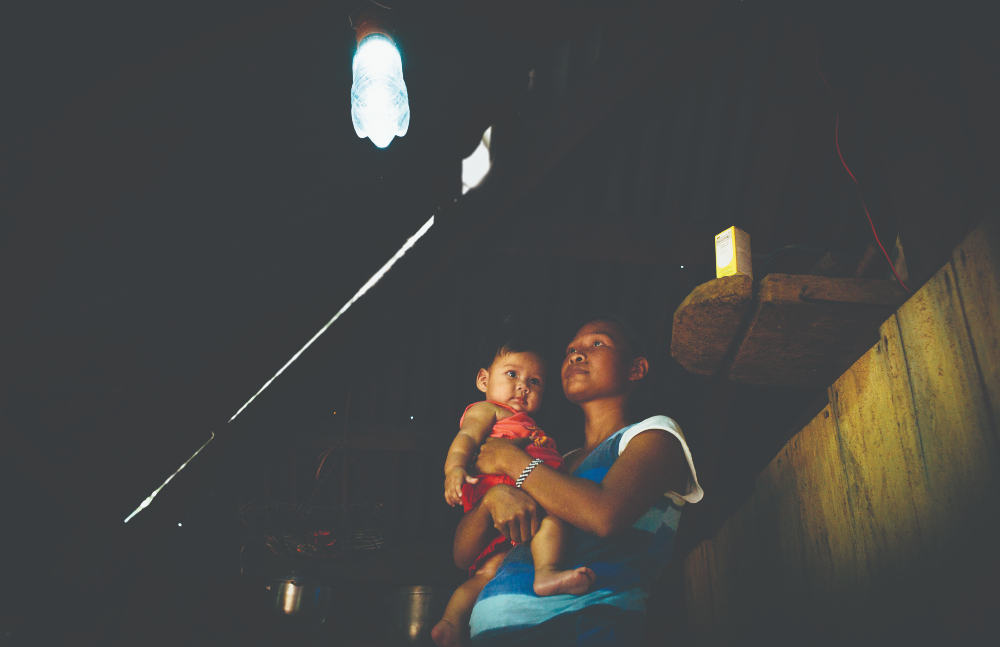Illac Diaz lights up rural communities without access to electricity
By converting empty soft-drink bottles into solar lamps, Illac Diaz has illuminated the lives of people in rural areas around the Philippines and beyond

Illac Diaz has captured imaginations around the world with his grassroots social enterprise Liter of Light, a Philippines-based organisation that promotes simple DIY technology to help people living in rural areas with limited or no access to electricity create affordable and sustainable solar light.
The 49-year-old MIT and Harvard graduate, whose work has been recognised by the United Nations, is a four-time TEDx speaker, holding audiences rapt as he describes the innovative but curiously straightforward process of converting regular two-litre soft drink bottles into durable and efficient solar lamps.
His organisation today operates in 32 countries, with a staff of 220, and helps provide light to around 1 million people a year. Some of the solar-powered lights can be assembled in just 30 minutes—and last for five years.
The group’s unique mission—along with its savvy Internet marketing—has caught the attention of international celebrities, politicians and corporations, all of whom have been eager to become a part of it. When Liter of Light uploaded a video in 2014 that ultimately racked up some 60 million views, PepsiCo saw an opportunity to ride the wave of positive publicity.
“Pepsi realised we were using their plastic bottles,” Diaz says. “Soft drink bottles are thicker than water bottles, so they work better in these types of lights. Pepsi loved it so much they gave us funds to expand in seven countries.”

Before long, Liter of Light counted among its global ambassadors the world’s fastest man Usain Bolt, tennis superstar Serena Williams, social media personality Jerome Jarre and American singer-songwriter Usher. Ordinary people from all corners of the planet began reaching out to Diaz and asking him how they could bring Liter of Light to their own countries.
Diaz, who wrote his university thesis on how countries on the front lines of climate change would need to adapt their urban and rural architecture, was thrust into the reality of the issue in November 2013 when Typhoon Haiyan made landfall in the Philippines, killing thousands of people and destroying millions of homes. Overnight, Diaz’s focus shifted from architecture to emergency lighting.
Tell us a bit about the origin of Liter of Light.
Liter of Light came about in the aftermath of Typhoon Haiyan, which was the first Category 5 typhoon to hit land in the Philippines. At the time, my work was building schools in the area. I was also tinkering around with how to help women get more work producing solar lights and renting them out. Before, they were using kerosene lamps in these villages, which needed to be refilled regularly, but solar lights were something that could be built and repaired locally.
After the typhoon hit, most donations were clothes and food. We started saying, “What about light?” There were increasing reports of crimes against women who were bringing food and money from aid stations to tents. Also, kids were rolling around in the tents and getting burned by the kerosene lamps.
We said we could build solar lights by hand with local parts—and do it now. We asked corporate donors to help us get started. Soon thousands of people were involved, bringing parts to our headquarters to assemble them into house lights and streetlights. We realised we were onto something.
The more money you spend buying carbon-based products, the more money that goes out of the village. By going solar for the next five years, you save that money and it stays in the village
How does the organisation work?
Solar technology is out in the open. Just go on YouTube and you’ll see that the DIY market is very powerful. The social enterprise part is more difficult to navigate. We coordinate with corporate donors and then work mostly with women cooperatives in the villages. The whole idea is transferring knowledge to locals. These co-ops are powerful because they will be there for years. The women and young people do excellent work because they rent their lights out to others in the community. They should be the engines for sustainability.

We don’t have any factories in 32 countries. Everything has to be built and maintained locally in the villages. We help establish a transport network between the rural areas and the markets where they sell their goods. On the way to the markets, the trucks are full of products to sell. We meet them at the markets and send them back with the parts they need. That’s how we maintain villages that are kilometres apart without burning through money on logistics.
What types of lights do you help people build?
We don’t do big lights, ten-watt solar is the max we do. If you need a reading lamp, you can rent a 1-watt solar light. We’re not going crazy. We make lights that are four or five times brighter than a flame. Then we do mobile charging stations, so people in villages don’t have to go to the city just to charge their phones. And we also teach them how to make streetlights.
What has been the economic impact of your work?
Thirty-five percent of income in villages is generally used for power and lighting. If the people don’t have kerosene, they’ll burn wood, which they also have to buy. So it’s a big burden for these communities to source something carbon-based. It’s also very toxic. Plus, the more money you spend buying carbon-based products, the more money that goes out of the village. By going solar for the next five years, you save that money and it stays in the village.
After we introduced streetlights and hand lights we noticed a 70 percent drop in crimes against women.

By working with local co-ops you also create institutional memory. They used to sell kerosene but are now shifting to “greener” jobs. To us, green jobs are not about buying imported solar products and reselling them. It’s about building local economies with local knowledge. We’re using old plastic bottles. My idea is not the technology. It’s just to show people what’s possible. Then let the innovation of locals lead to the creation of better products.
What types of projects is Liter of Light undertaking at the moment?
I remember a movie called Pay It Forward where this kid would do something good and then challenge other people to do something good in payment for what he did. We said, “Wait a minute. People are stuck in their homes for the next few months during the pandemic. Why don’t we ask corporate donors to deliver parts to people’s houses and they can build lights at home, put them on Instagram to prove they did it, and then challenge other people to do the same?”
It started with 10 people, then another 10. Soon it was 100, then 1,000, and then 3,000. When it hit 3,000 we knew it was going viral. Parents liked this project because it taught kids about solar lights and sustainable energy. And kids loved building them and showing them online. Some of the kids started to challenge congressmen and senators in the Philippines. The Light it Forward Philippines challenge currently has around 400 celebrities taking part. It’s going crazy.

What’s next?
We know that kids are struggling with being stuck at home. So we’ve also started enlisting them to make some of the largest solar artworks in the world—like 200 metres across. There are thousands of people helping build it. Now with the advent of the 75th anniversary of the UN, one city mayor called us and asked if we want to use his city as a canvas. So we’re taking over all the public parks and we’re doing artworks related to the UN’s 17 sustainable development goals (SDGs) to transform our world. What better way is there to talk about the future?
The original version of this article appeared in Issue No. 166 of PropertyGuru Property Report Magazine
Recommended
Why everyone is moving to Selangor and Johor: Malaysia’s real estate comeback
Malaysia’s upturn in fortunes is especially prevalent in secondary destinations such as Selangor and Johor
Penang’s silicon boom: How the US-China tech war is supercharging local real estate
Penang’s booming semiconductor industry has created ripples within the local real estate sector
New leader, new opportunities: How Hun Manet is shaking up Cambodia’s real estate game
Hun Manet is overseeing decent economic growth and widening access to the country’s real estate market for foreigners
Singapore embraces inclusive housing reforms amid resilient demand
The Lion City’s regulatory strength continues to exert appeal for international investors








